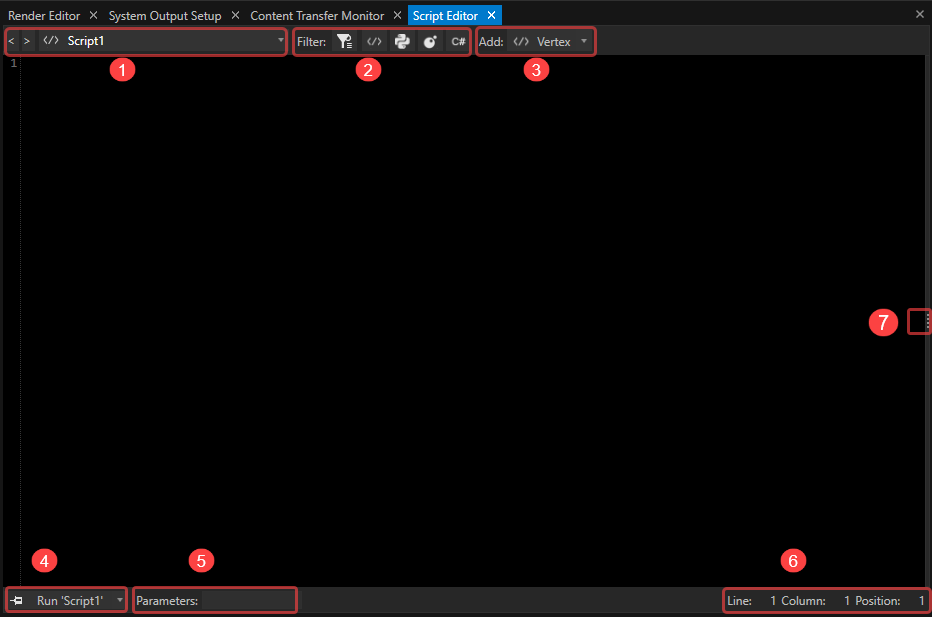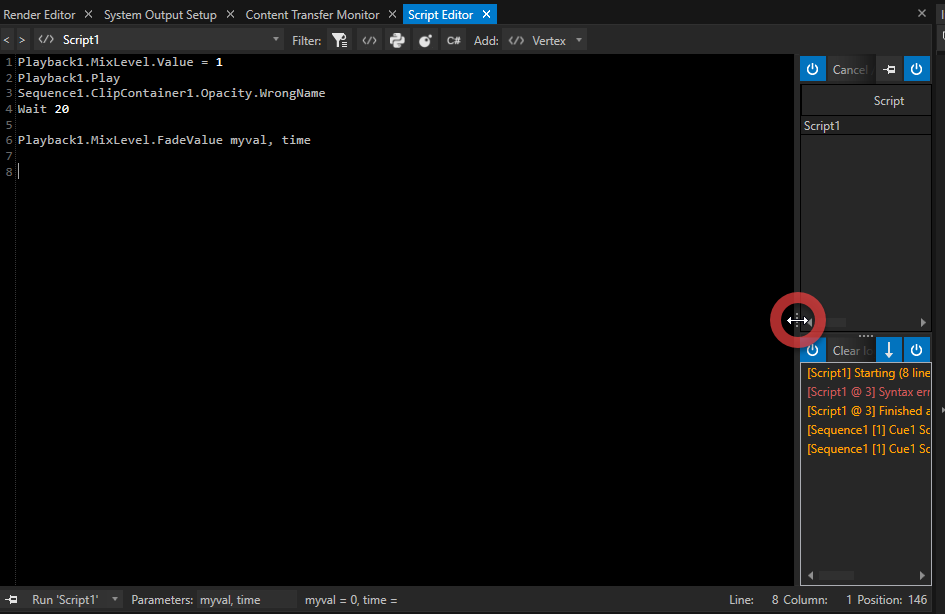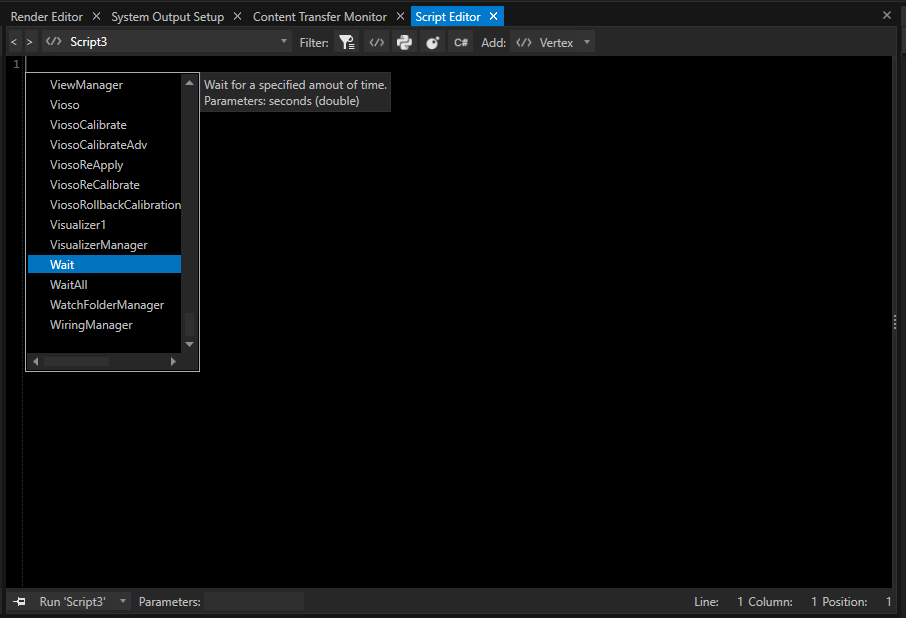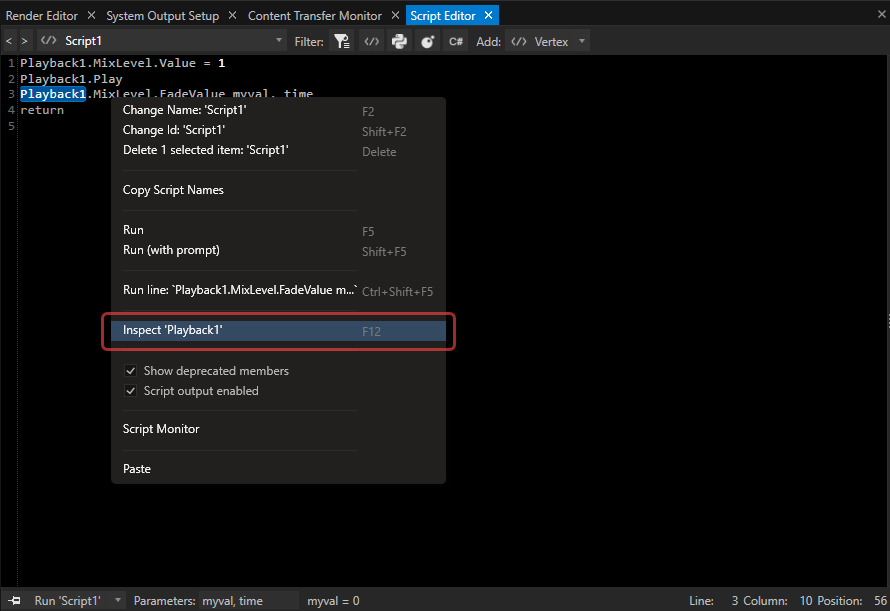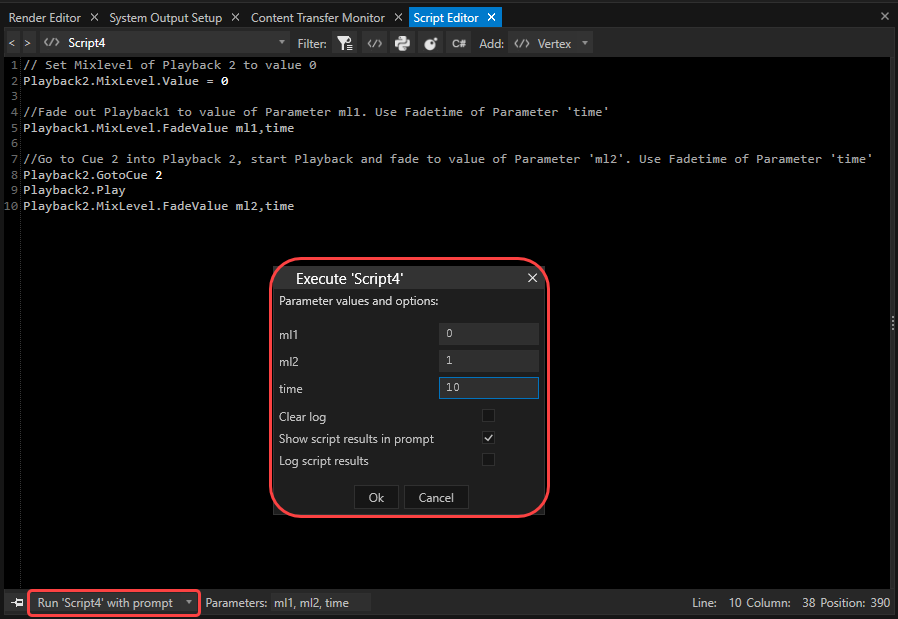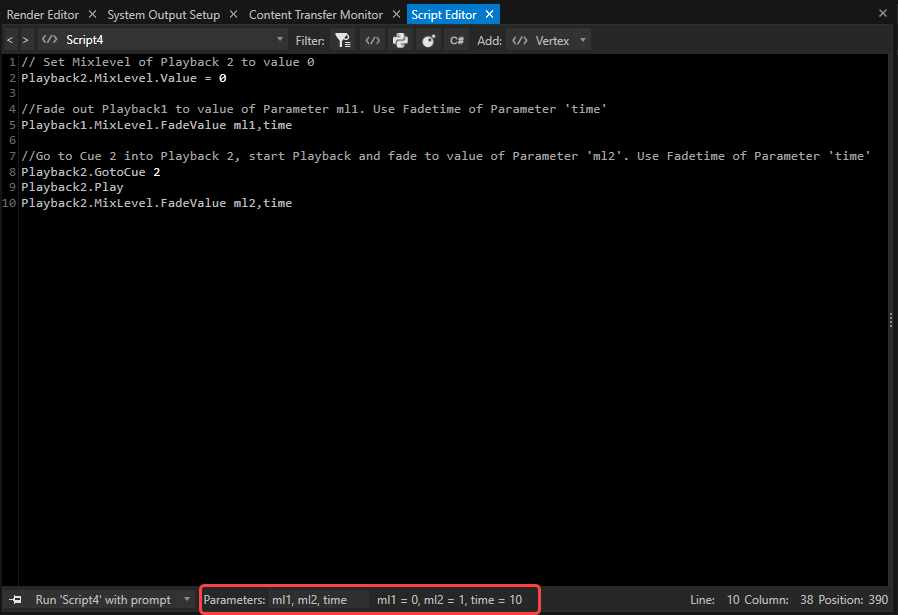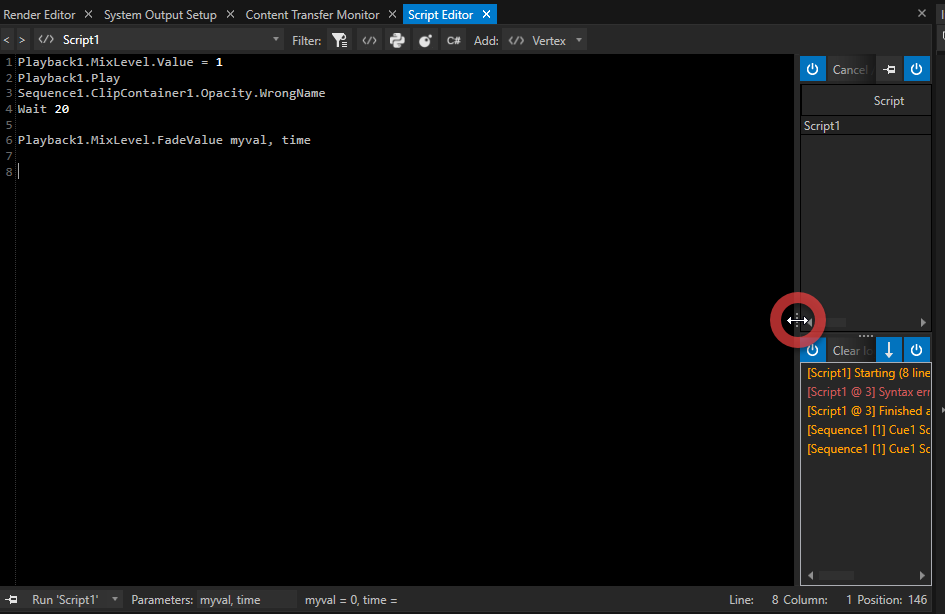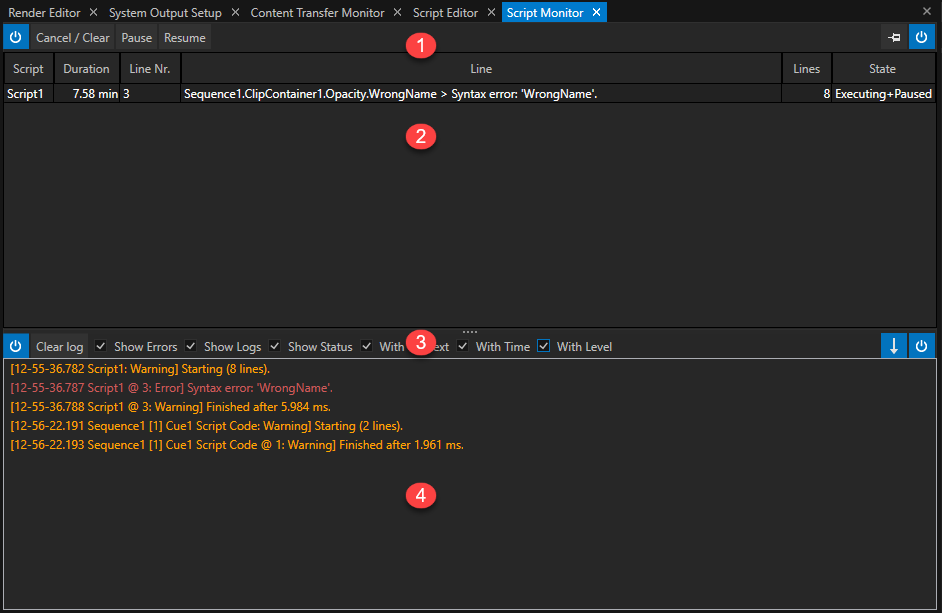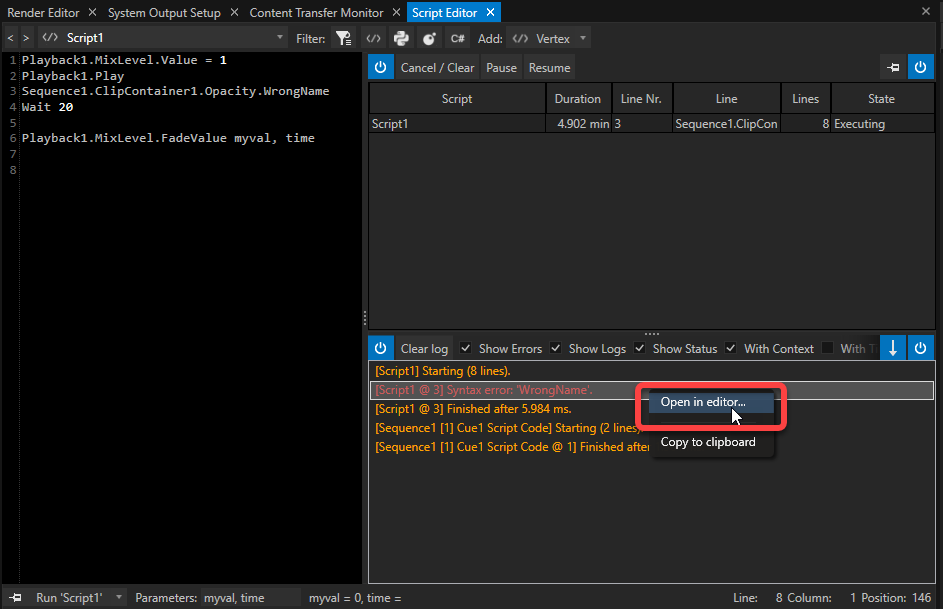•VERTEX comes with two powerful tools that let you write and manage scripts.
•Create, write and run scripts in the Script Editor.
•Debug, monitor or log script commands and scripts with help of the Script Monitor.
Script Editor
•This is where you write, test and edit your scripts.
•Let our ScriptWizard guide you through all available script commands.
History / Selection |
Select from a list of scripts or your history and display the script inside the editor. |
|
Filter Stand-Alone Scripts and Script Languages |
Disabled by default - script code from all elements in VERTEX is shown in the list. Read more here. Enable to show only stand-alone scripts. |
|
Create a Script |
Select your preferred scripting language from the drop-down menu and create a new script. |
|
Pin Script for Running |
Pins the currently selected script to the Run command button right next to it. |
|
Run Selected Script |
The currently selected script is started. |
|
If there are defined parameters for this script, you can assign values to them. A pop-up dialogue box will open to set values and optionally clear the cache. |
||
Enter Parameters for a Script. This is an easy way to set custom values that can be reused. Read more about parameters in the topic Scripts. This field is only availabe in stand-alone scripts. When you run a script with parameters, use the following syntax in the script command field: ScriptName Parameter1,Parameter2,Parameter3 |
||
Cursor Orientation |
This information on the whereabouts of your cursor will come in handy when writing long scripts. |
|
Sidebar with Script Monitor |
Pull out the Script Monitor for a fast debugging and monitoring of your Scripts |
Working with the Script Editor
•The shortcut "CTRL + SPACEBAR" in an empty line opens a list of all available items and commands
•Navigate through the list with UP/ DOWN ARROW KEYS or your mouse. A tooltip will pop up showing expected parameters, syntax and range.
•Confirm your selection with ENTER.
•Enter a decimal point "." to open a list of all available child items and commands on the next deeper level.
•Right-Click with your Mouse on a line - you directly can inspect the main element.
The selected Element is shown in the Inspector.
 Run a Script with the help of Shortcuts
Run a Script with the help of Shortcuts
F5: Run
Shift+F5: Run (with prompt)
Show Code From Other Script Command Fields in Script Editor
When the filter symbol in the menu bar is deactivated, the script editor shows all scripts that have been created in your project.
This includes the ones that are not stand-alone scripts but connected to other items in your project such es cues, triggers, scheduled events and timers.
The dropdown list of the script editor is now extending to all other available scripts in your project.
The name of such a script is composed of the main and child element - for example: "Sequence1 Cue1 Script Code":
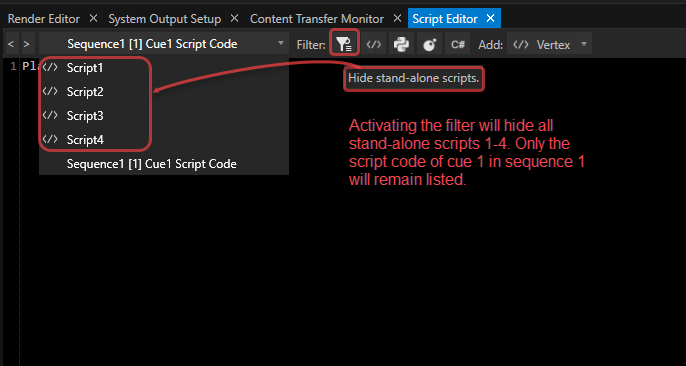
Likewise, you can show/ hide scripts of all available scripting languages by activating their respective filter symbols:

Run Scripts with Prompt
For testing purposes, you can add parameters directly from inside the script editor by using the button: Run 'Script' with prompt.
A popup window opens, where you can add values for all expected parameters.
Once parameters are assigned via the prompting window, their values are listed next to the Parameters field:
Script Monitor
•all scripts that are currently running can be monitored
•cancel, pause or resume any running script
•a console window lists events, status and errors
•a log script command passes values as lines into the script monitor console.
Open the Script Monitor
There are two ways to open a Script Monitor:
1. As an additional window
•go to the "Windows" Tab of the main menu on top
•open a new Script Monitor Window
2. Pull out as Sidebar in Script Editor
•move the mouse to the right edge of the script editor
•touch the symbol with the four dots there
•hold the mouse and drag it to the center of the editor
Script Monitor Control |
Power Button enables/disables script monitor |
|
Active Scripts |
- lists all active scripts that are running, paused or stopped at an error |
|
Console Control |
Power Button - enables the script monitor console - disable to save processing power |
|
Script Console |
area where script execution info is logged |
ScriptMonitor as a sidebar in ScriptEditor enables you to directly jump to the relevant line in a script:
1.rightclick on a script monitor or a console entry
2.select "open in editor"
